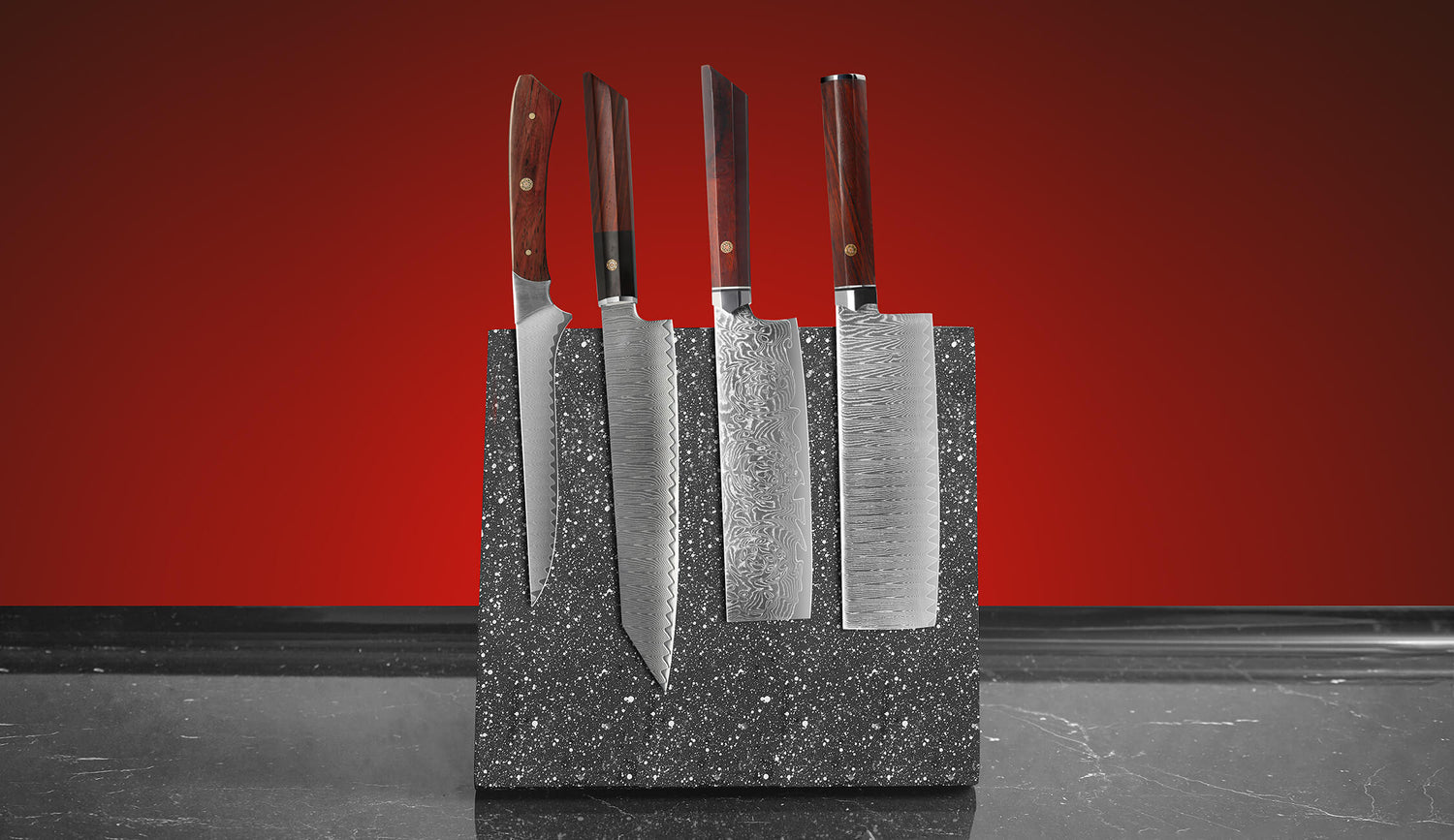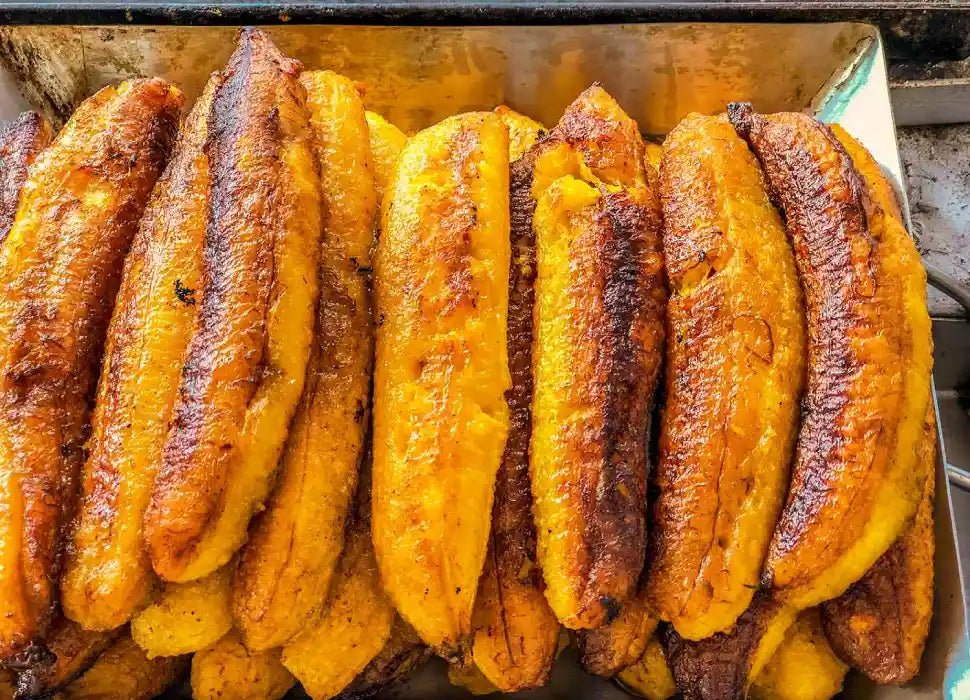TABLE OF CONTENTS
Damascus knives are one of the most sought-after kitchen must-haves today. But what is a Damascus knife and why is it growing so popular so quickly?
Well, if you want to know more about this exclusively-crafted blade, and if it is a good idea or not to own one for your kitchen, then all you have to do is continue reading.

Know What Damascus Steel is
Before diving into the details of this superbly-designed knife, let's first take a peek into its history. This blade has its origin in the famed Damascus steel, which was forged using secret methods known by a few craftsmen in the city of Damascus, the capital of Syria.
While originally the forging technique remained undocumented, the origins of this steel can be dated back to 300 B.C. By the 11th Century, this fabled steel found its way to Western Europe and then to the Arab warriors. However, by the 18th Century, the industry for making Damascus blade had completely died out.
A traditionally-made Damascus blade can be identified by its unique swirling patterns visible on the blade's flat surface. This distinct pattern is formed due to the several layers of steel added to each blade.
Present-day metallurgy and technology have worked their magic to recreate this unique blade. And make it available to us as an impressively sharp and highly durable Damascus Chef Knife.
How Are Carbon Steel And Stainless Steel Different?
While the main ingredients in stainless steel and carbon steel are the same – carbon and iron – the alloy content in these two steel types are different. Stainless steel should include 10.5% or more chromium, but the alloy content in carbon steel needs to be lower than 10.5%.
This difference in alloy content provides each of these steel varieties with its own physical characteristics.
It is common for home chefs to opt for stainless steel forged knives, but professionals mostly choose blades that are made using high-carbon steel. This is because stainless steel knives are readily available and can be stored easily.
Stainless steel is also less brittle than carbon steel, making them perfect for rough use like clanking against marble or dumping in your dishwasher without much care.
Professionals, on the other hand, prefer high-carbon steel forged knives because they can be honed to be very sharp, and they are more resistant to wear and tear than stainless steel ones.
Carbon steel blades tend to hold a finer edging even when you use them on a regular basis. Carbon steel is hard in nature. This metal is brittle and would rather break than bend.
This means that carbon steel blades are less prone to getting out of shape when exposed to impact, and instead their chip away upon impact, giving you clean lines each time you cut. Learn more damascus steel vs stainless steel.

Damascus Kitchen Knife – How Is It Made?
Today's craftsmen use the technique of 'mix and match' to create Damascus Chef Knives. They may alternatively opt for 'pattern welding' in order to make these knives. Almost all high-end blades are made through the layering of different steel types.
That is why such blades have a steel 'core' that is brittle and hard and functions as the cutting core. This core is then laminated with softer steel layers.
The softer steel functions to absorb shock to improve the blade's performance, and it serves in the form of outer 'cladding' for the knife. Generally, it is this cladding rather than the core that is made using Damascus steel.
Although most such exquisite knives are made using stainless steel, it would be perfect if you came across a blade whose core and layers are made with high-carbon steel. Such a blade is highly functional and high in performance when it comes to using in the kitchen.
Ways To Sharpen A Damascus Steel Knife
Here are a few ways to ensure that your blade stays sharp for every use:
Using a Honing rod – This is a highly useful and efficient tool for sharpening your blade. A honing rod functions to align and reposition your blade's edge. The process of honing your knife using this rod is pretty simple.
Manual sharpening – This type of sharpening solution is easier compared to whetstones, and manual sharpeners feature different slots for different sharpening types. You just have to run the knife through each of the slots a number of times to sharpen your blade. And make sure that you stick to the instructions on the manual to the last word.
Using Whetstones – Even if it sounds intimidating to use a whetstone for sharpening your blade, the process is quite easy to follow. All you have to do is hold the handle and place the blade at such an angle that it is directed towards the whetstone until such time you achieve the right precision. After a number of tries, you will learn the skill of honing your knife using a whetstone, and the results will be worth your effort.
There is no rocket science involved in sharpening your Damascus Chef Knife because all these methods are used for sharpening a standard knife. Just be brave enough to take the first step and the rest will be easy to follow.
Top Damascus Steel Knives

Gyuto Chef Knife 9" | AUS10 Hammered Japanese Knife| imarku
This is a budget-friendly knife that comes with a fragile but sturdy handle and a distinct style. It is made using AUS10 stainless steel. Additionally, it is stain resistant and its handle is made using rosewood to provide a stable, safe, and ergonomic feel to the knife.
Pros
Ergonomic design and properly weighted.
Includes a gift box.
Quality Japanese Steel with a sharp edge.
Cons
The blade's handle may be uncomfortable for use by those with large hands.

Damascus Nakiri Knife 7'' | VG10 Japanese Knife | imarku
This Damascus Nakiri Knife is elegant and simple. The functionality and overall design make it unique and exceptional in this category of knives. High-quality VG- 10 high-carbon steel (Japanese) makes the 'cutting core' of this sharp and sleek blade.
It is a razor-sharp knife that slices smoothly and cleanly through all materials, making this blade a highly versatile kitchen tool. The ergonomic handle design adds to your control and comfort during use, and its curvature design makes it convenient for left-handed users to cut efficiently and effortlessly.
Pros
Ergonomic design for perfect balance
The curvature on the handle makes it suitable for use by both left and right-handed users.
The sharpness is impressively honed.
Exclusively simple and elegant design.
Cons
There are some users who are not happy with the layers used in cladding this blade.

Damascus Boning Knife 5.5'' | VG10 Japanese Knife | imarku
This boning knife that is created to perfection. This is one of those blades that assures you of delivering graceful finesse. The blade is made using quality Japanese VG-10 steel and its captivating design is traditional and simple. The layers are attractive and glossy in appearance.
It is backed by Rockwell hardness (62). The reliability of the edge comes with ultra-sharpness and rust resistance. The handle is made from rosewood which adds to the knife's sturdiness and durability. The 'triple rivet' design along with a full tang makes the handle comfortable to use with good control over the blade.
Pros
The handle is ergonomically-designed with rosewood.
Comes with free replacement in 90 days.
Exquisite design.
Japanese steel forged blade for a finer edge.
Cons
While the blade is quite sharp, there is no sheath provided with it.
Conclusion
So, now you have a clear idea about this unique knife and what makes it so special. It is the effort in the making of this blade that ensures its high-quality deliverance when it comes to slicing, chopping, cutting, or any other such requirement.
But you have to know the difference between high-end and low-quality products before you look out to purchase this knife for your kitchen. The above-mentioned products will help you narrow down your choices.
Finally, the question that begs to be answered - Is Damascus Chef Knife Good? It is clear from above that Damascus steel comes with great strength that results in producing quality knives.
Not only does it feature an intricate and unique design, but its blade features a sharp edge that is long-lasting. The use of carbon makes this exquisite knife durable and high-performing. It adds to the blade's flexibility to avert breakage while giving you neat lines along with clean cuts every time you use it.
That is the reason why these knives have become a household name all over the world. While their exquisite patterns add to the aesthetics of the kitchen, their edge retention and sharpness are beyond comparison.
Hopefully, all these exceptional features of this knife will help you come to a decision without a doubt in your mind. Investing in this blade will definitely help you better your culinary skills without putting in much effort.
And the end result is that you get to give your family a fine dining experience from your very own kitchen, without having to worry about the sharpness of your blade.






















Leave a comment
All comments are moderated before being published.
This site is protected by hCaptcha and the hCaptcha Privacy Policy and Terms of Service apply.